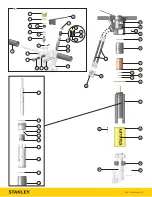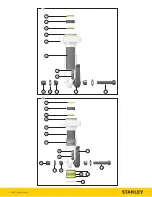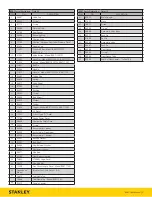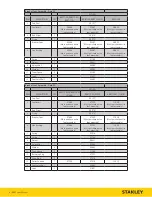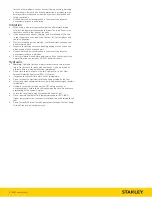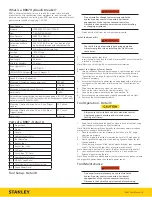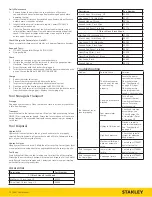
8 | BR87 User Manual
loss and other problems, such as tinnitus (ringing, buzzing, whistling
or humming in the ears). Use hearing protection in accordance with
employer’s instructions and as required by occupational health and
safety regulations.
•
Use and maintain as recommended in the manual to prevent an
unnecessary increase in noise levels.
Vibration
•
When using a non-rotary percussive tool to perform work related
activities, the operator can experience discomfort in the hands, arms,
shoulders, neck or other parts of the body.
•
If you experience numbness, tingling, pain or whitening of the skin
in your fingers or hands, stop using the tool. Tell your employer and
consult a physician.
•
Wear warm clothing when working in cold conditions and keep your
hands warm and dry.
•
Exposure to vibration can cause disabling damage to the nerves and
blood supply of the hands and arms.
•
Use and maintain as recommended in the manual to prevent an
unnecessary increase in vibration.
•
Check for vibration level before each service. If you feel a higher than
normal vibration, contact your STANLEY dealer for repair.
Hydraulic
•
Warning:
Hydraulic fluid under pressure could cause skin injection
injury. Do not check for leaks with your hands. If you are injured by
hydraulic fluid, get medical attention immediately.
•
Do not let hydraulic oil get on the skin. Hydraulic oil is hot. Wear
Personal Protection Equipment (PPE) at all times.
•
If exposed to hydraulic fluid, wash hands immediately.
•
Do not exceed the maximum relief valve setting stated on the tool.
•
Inspect and clean couplers before use, daily. Replace damaged couplers
immediately.
•
Hydraulic circuit control valve must be OFF before coupling or
uncoupling tools. Failure to do so may damage the couplers and cause
overheating of the hydraulic system.
•
Ensure the couplers are properly connected and are tight.
•
Do not operate the tool at fluid temperatures above 140°F (60°C).
Higher temperatures can cause operator discomfort and damage to the
tool.
•
Do not exceed the rated flow and pressure as stated on the tool. Rapid
failure of the internal seals may result.



